#subtropical flowers
Photo
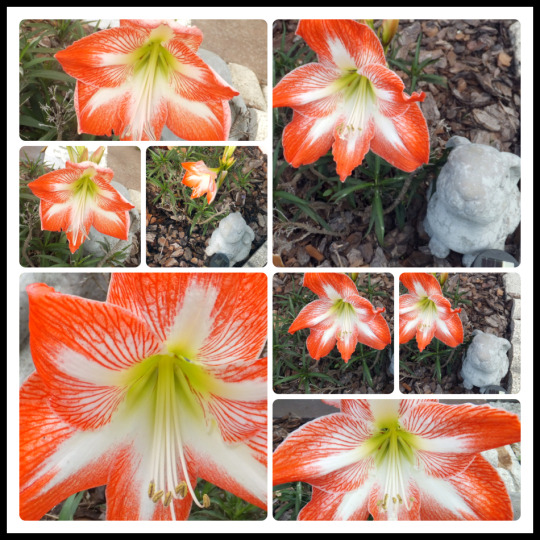
June Garden Floral Surprises In Central Florida
I live in Central Florida, growing zone 9B which is semi-tropical. Amaryllis is a subtropical bulb that belongs to the Amaryllidaceae family and is native to South Africa. It is grown as a potted plant in most parts of the United States but can also be grown outdoors year round in warm areas like Florida. Amaryllis sold at Christmas are FORCED bulbs.
#garden#tropical#subtropical#subtropicalblooms#subtropical bulb#subtropical flowers#amaryllis#amaryllis flowers#red and white amaryllis#June garden#Florida#Florida garden#central Florida garden#semitropical
6 notes
·
View notes
Text



#ts2#the sims 2#ts2 gameplay#owlcreek#uniyears#housinglife#apollobabineaux#stop DYING#we have GOT to get this delicate flower back to a subtropical climate#i really through lock would be the sickly one
24 notes
·
View notes
Text

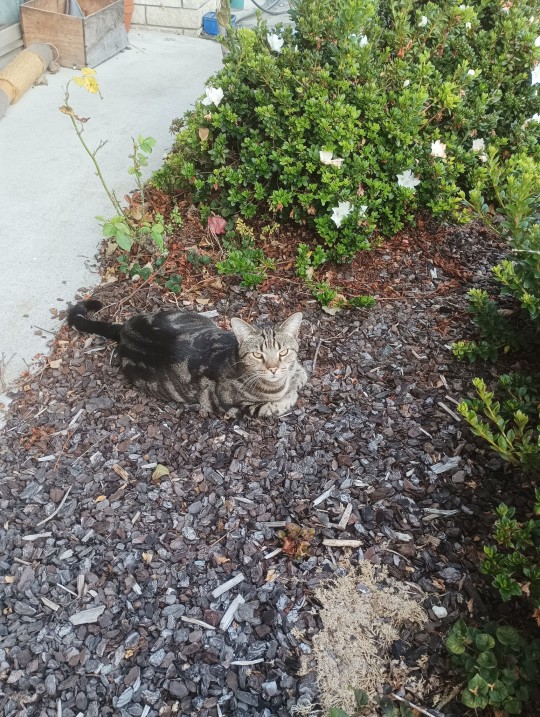


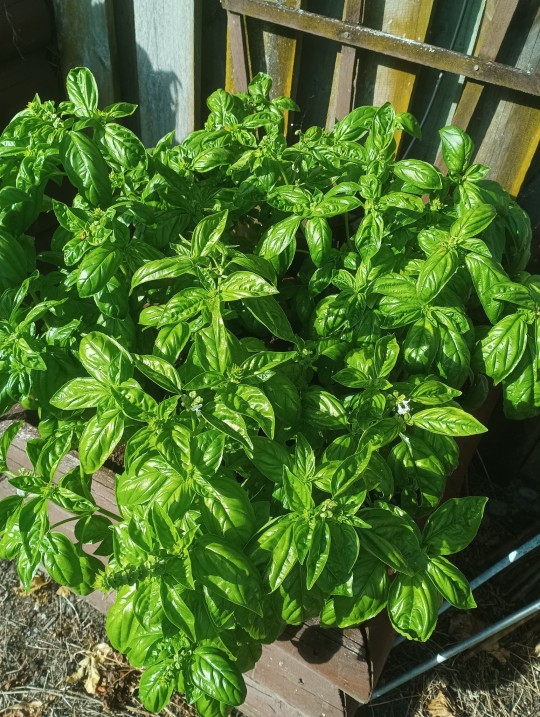

#good morning from my garden...#yes my basil is growing like a weed#I'm reminded that I live in a subtropical country every time I grow basil#time for another verde risotto I think#flowers for my followers#and a cat and some basil too I guess
3 notes
·
View notes
Text

HIbiscus
Hibiscus is a genus of flowering plants in the mallow family, Malvaceae. It is quite large, containing several hundred species that are native to warm-temperate, subtropical and tropical regions.
100 notes
·
View notes
Text



Images of the Mykola Hryshko national botanical garden in Kyiv from the article "A Guide to Mykola Hryshko National Botanical Garden".


Volunteers selling plants in support of the Ukrainian army. Photograph: Anastasia Vlasova/The Guardian

Roman Ivannikov says the orchid house’s unique collection is especially vulnerable to the cold. Photograph: Anastasia Vlasova/The Guardian
The Mykola Hryshko national botanical garden is home to 13,000 species of trees, flowers and other plants from around the world. The 52-hectare (130 acres) site has scientific departments and two laboratories.
Due to Russia's war and aggression, the botanical garden and many of the species of plants it cares for are in danger. There are species that require specific temperatures to live and remain healthy.
Russia has attacked Ukraine's energy infrastructure, causing power cuts across the country. The situation spells disaster in the coming winter months. The city authorities cannot guarantee a supply of electricity, and the prices of electricity have increased while the funding for the garden has shrunk.
When the power gets cut off, they have to use a barrel-shaped stove in the middle of the tropical greenhouse and feed wood to the fire.
“Worst-case scenario is we lose a big part of our collection,” Roman Ivannikov, the head of the tropical and subtropical plant department, said. Money is so tight he and his colleagues recently took a pay cut. Last winter, £55,000 in donations kept the garden going, allowing the purchase of 242 tonnes of fuel pellets. Volunteers chopped firewood. The garden is appealing for help, under the hashtag #greenhousewarming.
(Source: The Guardian: Kyiv’s botanical garden staring at disaster as Russia targets Ukraine’s energy sector)
If you want to help the botanical garden and prevent an ecocide event, you can donate to the cause HERE. This donation link can be found in The Guardian article linked above.
The botanical garden has provided therapeutic value to its volunteers and visitors during wartime. Let's not have Russia ruin another thing.
#Ukraine#botany#flowers#botanical garden#ecocide#article in link#Russia is a terrorist state#Kyiv#greenhouse warming
85 notes
·
View notes
Text
Take My Hand again actually we're gonna go on a walk through Night Raven College campus real quick while I lose my mind

First off look at the front gate. People have definitely brought up the birds and the keys and those ARE both very important symbols, BUT. What about the thorns sprawled across the top of the gate? And the repeat use of 4-pointed stars in the lettering gives an especially prickly quality, overall.

Also of note are the decorations on the main pillars and the very specific aesthetic choice for the shape of the wrought-iron fence—by which I mean both reflect designs found in Draconimom's appearance.
The carvings on the gate pillars feature an ankh-like shape that matches up eerily well with the central decor of Draconimom's belt, as well as two curves that mimic the main body of the belt. The three-leaf/bud-like shape above that is reflected in the lace pattern and dangling decoration of the Mirror Chamber's chandelier. The two swooping S-shapes mimic the Draconia family's iconic horns, and the little decorations on either side of the carving match with the shape of Draconimom's pauldrons.

As for the fence…it's That Shape again. Each post also bears resemblance to the upper portion of Draconimom's staff.

Considering the focus on thorned vines in relation to Diasomnia/the Draconias, the way that vines are slowly creeping up both the fenceposts and gate pillars feels relevant.
(Please recall: The coffins by which students are summoned into NRC are also referred to as "Gates.")

Next stop is the botanical garden. As I mentioned in a previous post, the building's overall shape is notably similar to the chandelier found in the Mirror Chamber. The large beams surrounding the building, with their spear-like support pillars, give the impression of the building being held in place by thorned vines.


The inside of the garden doesn't yield much in the way of analysis, unfortunately. The most stand-out feature is the crumbling structure in the subtropical zone, but that arguably could've been intentionally allowed to decay as a way of cultivating the various mosses and lichens we see growing on it.
(Please recall: at the beginning of the game, before you choose a student, Crowley has a monologue in which he appears to refer to the Dark Mirror as "a lovely and noble flower of evil.")
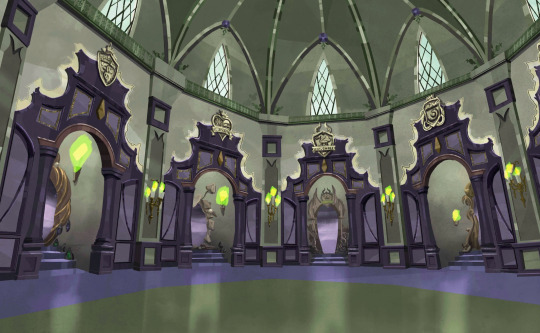
And now the Hall of Mirrors. This one has subtler details than the others, but still just enough for the pattern recognition part of my brain to start making noises.
Again, the outside of the hall bears a passing resemblance to the chandelier in the Mirror Chamber, though much less so than the botanical garden. More important to this analysis is the inside of the building.
Listen. Not all lace is related to overblots. But the majority of lace in Twisted Wonderland HAS appeared in relation to overblots. The presence of an unmistakably lace-y pattern on the beams under each ceiling arch feels worth pointing out. After all, as of Book 7, at least one student per dorm linked to the Hall of Mirrors has overblotted.

There are also small floral decorations on each arch: two buds in the lower corners, and a bloom at the top. Again, Crowley's "flower of evil" comment comes into play; each dorm, again, features a major antagonist who is visually and textually placed parallel to their respective member of the Great Seven (OG Disney villains).

There's also. Y'know. The horn-like design on the pillars.

(Please recall: each dorm linked to the Hall of Mirrors is, apparently, contained within a pocket dimension with somewhat strict borders.)

Okay now we're at the coliseum and I need you to bear with me for this first point. Look at the entrance. It's too ostentatious to not be important somehow, right? It's too overdone. It's the Dark Mirror's mask, kinda? Don't ask how long I've been staring at this thing
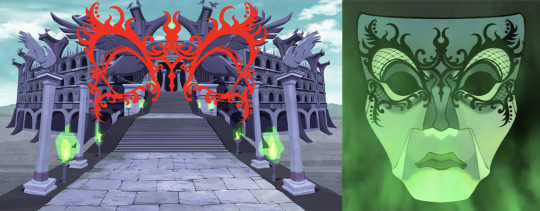
Aside from that, the coliseum has thorns lining the rim of the structure twofold. One set of thorns exists as spears jutting out along the rim, while the other set exists as the long, simple, repeating pattern on the wall just under those spikes. On the outside of the building, this pattern repeats for every floor, effectively giving a sense that the structure is "wrapped" in thorns.

There are also thorns visible in the support beams of the stage; they're especially noticeable after Malleus fixes the stage, as they're lit up a bright pink (as opposed to the gold they were prior).

Upon the stage sits an odd, crumbling structure. It's clearly made of a different type of stone than the rest of the coliseum, being a dark gray instead of subdued purple, but that's not all—the architecture doesn't match up, either. The two main columns don't resemble any others found in the coliseum, notably. The arch-and-a-half visible both distinctly feature three-pointed arches, unlike the round arches consistently found throughout the rest of the building.
The fact this structure has been allowed to remain in such a deteriorated state is also worth questioning, especially since it's obviously been modified at some point fairly recently; the LCD screen it's been fitted with seems to work like a normal electronic device w/ no magical component to it. Even if you were to argue that the structure is supposed to have a distinct aesthetic from the rest of the coliseum to better draw attention to the stage it rests on, its condition renders the argument null. I love its decrepit vibe as much as Malleus might, but very few people would see this as an acceptable "centerpiece" for such an important location. With how Crowley squawks about maintaining the school's reputation, why does this pass by without comment from him…?
At least the chains frame the stage nicely. Though, they could serve a symbolic purpose as well…
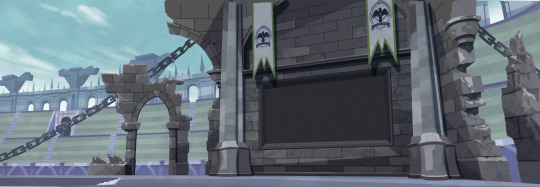
(Please recall: according to Rook, the school staff claims that the coliseum is "imbued with a special field that makes it harder for damage to spill out." We can assume that this is the truth, as no one outside of the coliseum seemed to notice Vil's overblot—just the traces of excessive magical energy leftover afterwards.)

And finally, we come to the Mirror Chamber. Keeping in mind that the Dark Mirror can teleport people (both for enrollment and in general), the most notable visual qualities of this room are as follows:
Gates (coffins, the Dark Mirror)
Plants (chandelier, rose arches, standing lamps, windowpanes)
Mirrors (the Dark Mirror)
Containment (chains, coffins, the Dark Mirror)
It is very, very interesting that the four primary structures on NRC campus with a direct relationship to the items on this list also feature aesthetic similarities to the Mirror Chamber. Also of note is that although each structure chiefly embodies one item on the list, they all incorporate aspects of the other items:
Front Gate–
Plants: As previously noted, there are vines steadily attempting to overtake the fence and pillars + thorns sprawling across the top of the sign.
Mirrors: Structural design is mirrored across the vertical axis, carvings are mirrored across both horizontal and vertical axes.
Containment: Although open in this view, the front gate as a whole embodies the concept of NRC campus as an area that is closed off to the rest of the world.
Botanical Garden–
Gates: The entire building signifies a departure from the surrounding campus into a space especially designed for the housing and growing of plants.
Mirrors: Look at that thing. You can't have a building made mostly out of tempered glass and not have it be reflective as fuck.
Containment: Aside from the appearance of being held down by thorned vines, the building does, again, exist for the purpose of containing plants.
Hall of Mirrors–
Gates: Each mirror acts as gate leading to each of the seven dorms.
Plants: Previously-detailed floral decorations.
Containment: Again, each mirror contains a dorm. This, in turn, means that this building technically contains…nearly the entire student body.
Coliseum–
Gates: It's got one right out front lmao. But yeah, like the botanical garden, the building signifies a departure from the surrounding environment.
Plants: As mentioned earlier, the entire building has the appearance of being wreathed in thorned vines + further incorporation of thorns in the stage.
Mirrors: Previously-shown Dark Mirror comparison. Also, like the front gate, the structural design is mirrored across the vertical axis.
What does this all mean? NO fuckin clue. But if we consider how the very first battle of the game seems to take place in the Mirror Chamber, at least two of these locations have been (or will be) the setting for a major overblot battle.
(I will say…it's very funny that, despite Pomefiore being the first established dorm from a lore perspective, a lot of the campus has much more Diasomnia-esque aesthetics.)
#twst#twisted wonderland#twst meta#meleanor draconia#night raven college#design analysis#twisted rambling#nearly 1.5k words and i'm tired of looking at this thing. change da world. my final message. goodb ye
183 notes
·
View notes
Text
this is the place to post about your knowledge and i’m thinking about my little royal sunangel (from the coquette hummingbird family) google deep-dive and i wanted to show you guys these rare little bastards!
this is a male (left) and female (right) sunangel, they’re sexually dichromatic (different colors indicate different sexes) and so, so teensy! they’re roughly 4.3-4.7 inches/10-12 cm long from their beak to their tail!
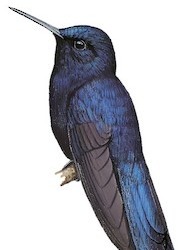

they’re as little in number as they are little in size, too. they are exclusively found in the bordering andes area ecuador and peru share, where there are subtropical elven forests (because everything about them deserves a pretty name). there are only 8 known sunangel habitats within this area. when documentation started, around the start of the 2010s, there were 12. the estimated population of this endangered bird is anywhere from 3-7 thousand. the royal sunangel population has been steadily — and scarily — declining since their discovery in 2009, and this is largely attributed to the deforestation due to frequent forest fires and the conversion of their habitats into agricultural fields.

it feels like the royal sunangel JUST got discovered, and the scientific community has only JUST started noting down how unique they are among their hummingbird family and birds at large, and now their delicate little frames and stubborn commitment to their habitat range might lead them to death’s door before i reach middle age and have the credentials or cause to observe them myself. ornithologists love these little guys because they feed in these little circuits so no two (super territorial) males may meet, and when they feed, they either stalk and eventually eat insects or take nectar from shrubs and flowers using the punctured feeding holes of some other animals’ labor. also, you know how hummingbirds famously hover while they feed? these hummingbirds are the only ones who don’t. they perch and relax (as is only sensible)!

If you find them as charming as I do, or if you have a heart, you’re probably asking yourself how we go about conserving these birds in the first place.

well, on the agricultural front (which is more heavily an ecuadorian obstacle for these habitats), the situation feels more complicated. ecuador’s market relies on agricultural exports and i don’t see how tumblr users could make the government prioritize sustainability over profits. There are already conservation groups trying to fight that good fight and buy properties on these fragile biodiverse lands before agricultural companies can (you can punch in neoprimate.org for a good one, my link function isn’t working on here) and if you can donate a little to these initiatives you’d be contributing to the protection of tons of endangered species in the local areas.
another way to prevent habitat loss is by funding efforts to prevent the forest fires that frequently wipe out habitats around this area, especially those in peru (the area with the majority of sunangel habitats). there are legal and activist groups putting energy towards that that’s linked above, but another subtle improvement is to provide local farmers and residents with fire weather forecast devices. this way, everyone will be on the same page, and know that if it’s an arid/risky day to light a fire, they should act conscientiously. these devices are being circulated and groups are educating about and encouraging them to the local communities and could use some help in these links. below, i have a screenshot from an organization that doesn’t have a clear donation link for me, but i heavily encourage supporting, because ultimately i think local, sustainable, community-based and indigenous-prioritizing efforts are the way to go.
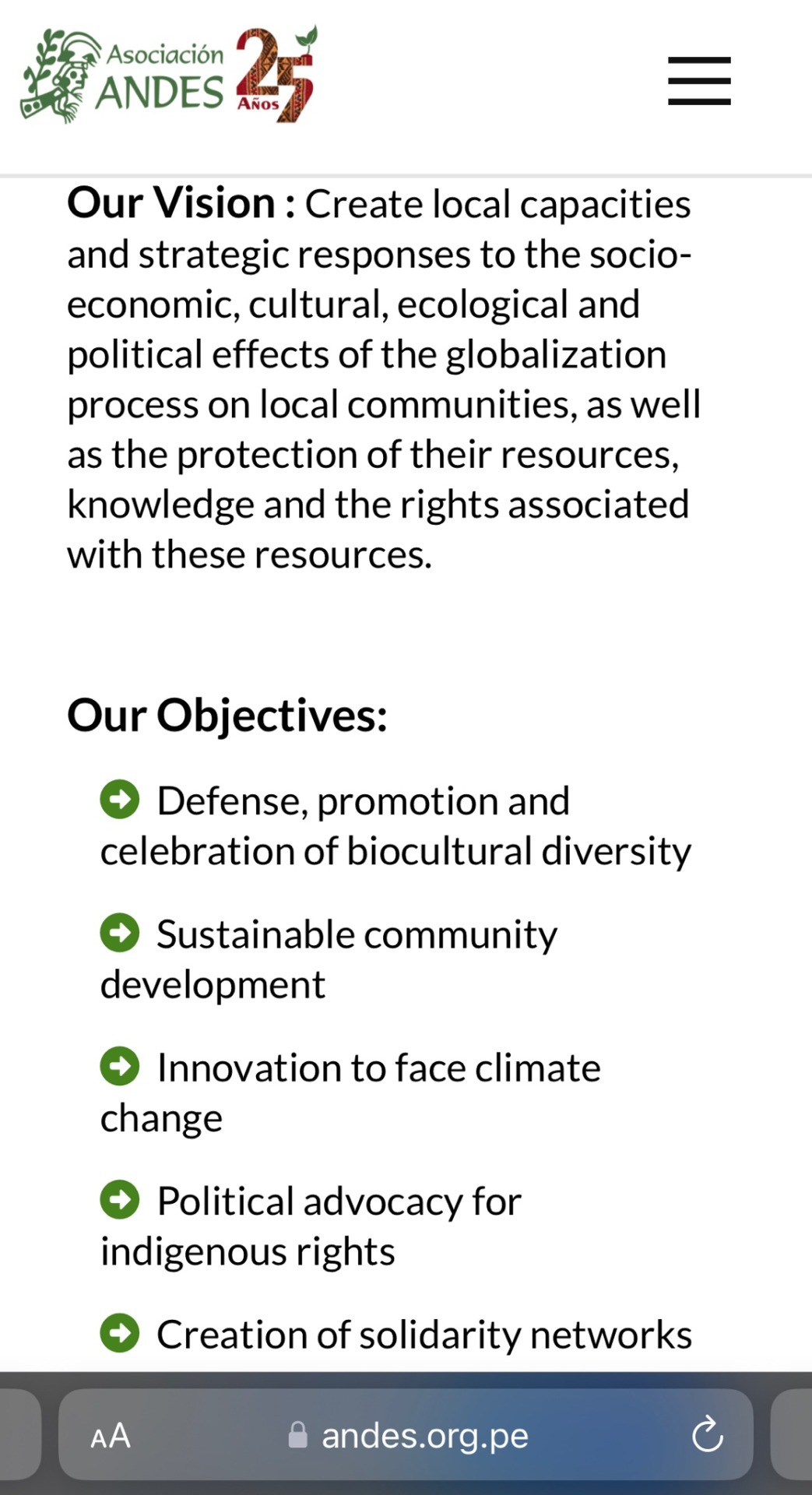
thanks so much for listening to my little spiel about these cuties, and i hope this information brightens your day and motivates you to care about the beautiful things we can protect. 💙💜
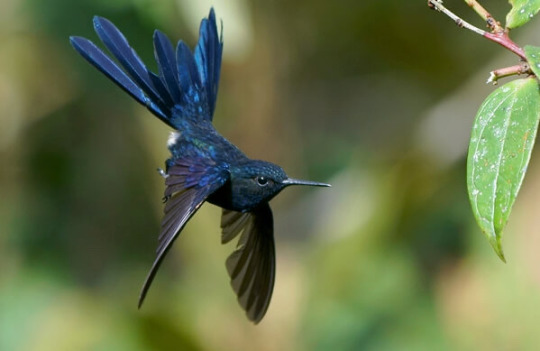
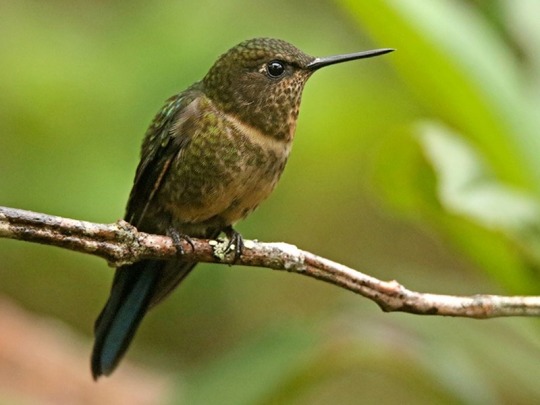
#conservación#conservation#ornithology#birdblr#birdlovers#birds#birdphotography#hummingbird#royal sunangel#peru#ecuador#conservatism#amazon#rainforest
454 notes
·
View notes
Text
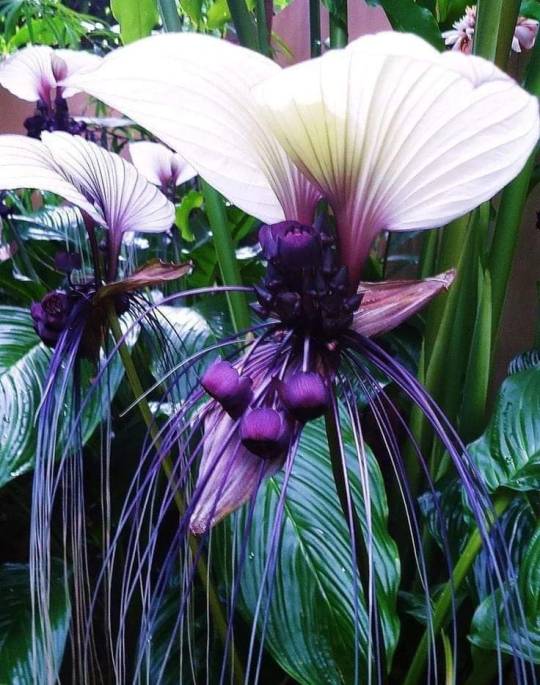
White Bat Flower
Wikipedia
Tacca integrifolia, the white batflower or black lily, is a species of flowering plant in the yam family of Dioscoreaceae. It is native to tropical and subtropical rainforests in hilly regions of South Asia from Pakistan to Bangladesh, Indochina, Malay Peninsular, Sumatra, Java and eastern China.
78 notes
·
View notes
Text
Was watching some playthroughs of Manor Lords and it's so adictive to just WATCH playthroughs it's cutting on my productivity, I can't imagine how it will be to play it yet. Anyways.
Thinking about "cozy" farming sims and the like. Manor Lords isn't aimed at that kind of stuff at least not explictly, you ARE a feudal lord (you can even walk in first person as one) and those people ARE your serfs. I guess there will be some people who interpret it as that, and let's be honest, the game is so pretty and intuitive, it's just so relaxing to see the forests change seasons, the houses being built, the flowers swaying on the wind. Working like a serf all day, not so much. No doubt peasants in the Middle Ages and all over the world had their moments of rest and respite and joy, but it was (and still is) a hardworking, exploited existence like we are not usually used to.
I think Manor Lords really GETS what a subsistence farming economy was like, at least at the very beginning. and this is really important in my opinion because it was the lifestyle of no less than 90% of the world's population until very recently. And it wasn't like in Stardew Valley where one farmer had a variety of crops all growing in the same tiny farm. In Manor Lords you usually build a small hamlet or village, every home with its own little backyard plot with vegetables, chickens, but it is actual fields what truly feeds and clothes people. The distribution and managing of these fields, and how big they are, is something that changes from society to society, but it's not like there is a single household that is able to feed itself and is able to do everything that a human needs to eat, to get clothed, to be warm in winter and more. They need to have big open fields (or pastures) to do that, where the community puts most of its time and effort maintaining.
So when you think about subsistence farming, you shouldn't think about it as peasants (wherever in the world where they are, as they still exist, why do you think we Latin Americans talk so much about the campesino struggle) owning one small plot of land and feeding their household with it. You should think of them as communities where the main and sometimes only activity is farming, and they do not farm to sell it to a market (though campesino communities can and do produce excess they can sell) but to sustain themselves and their family. They do not especialize in a single crop or industry, nor they have the time or ability to. They plant whatever helps them feed and clothe their family, that is, subsist.
In Manor Lords, you can also "cheat" a bit and get goods by trade, or survive by gathering berries (EXCESSIVELY OP) or hunting. The first was impossible in very remote areas, and the second was impossible in high-density areas. Which means that you can't sustain a community by just gathering berries or having home gardens. Vegetables and fruit CAN and do supplement the diet of people and they make life infinitely more enjoyable (some places like tropical and subtropical America are very blessed in that respect and their crops are very diverse), and indeed most people have those, but it isn't enough to feed you every day. You have to farm to it. And it's a way of life tied to the land and the seasons. You gotta have enough food and firewood before winter (Manor Lords is tied to the European temperate seasons of course, but every region in the world has its own), you gotta prepare the fields, mill the grain and bake the bread, it's all work, work, work, neverending work. There is a reason why some have said agriculture is kind of a "trap" to humanity, it allows you to feed yourself and your family at the cost of being tied to your land forever, and this didn't change until very recently. And again, while of course it's also a life that has its moments of rest (harvest festivals! and all those church days in Europe, but again, every region has its own traditions), it's still work, work, and work more.
I think this is an interesting contrast with other "cozy farming sims" of which are there are a ton, with a single character being able to produce the whole spectrum of human food and a bit more. Manor Lords to me is very interesting because by having its resource and city building in such a small scale as individual families, it captures in a rather realistic (if not completely so) way how subsistence agriculture is, which is the way virtually most of our ancestors (no matter where you are from) lived. To me that's way more interesting than the combat system.
(yes, I've said I didn't play it yet, but I've watched and analyzed so much of it I might as well have 120 hours logged on it)
#I don't play it yet because I'm not sure if it can run in my integrated graphic card (even if they say it's quite modest)#and also I don't have time to truly get addicted to it#cosas mias#manor lords#farming sims#farming#subsistence farming
52 notes
·
View notes
Text

Black Howler Monkey (Alouatta caraya)
Habitat & Distribution
Prefers tropical rainforests, but can also be found in subtropical, deciduous, and mountain forests
Found in the Amazon Rainforest of southern Brazil, Bolivia, Paraguay, and northern Argentina
Physical Description
Weight: Up to 9.9 kg (22 lbs) for males, and 5.4 kg (12 lbs) for females
Height: 55-91 cm (22-36 in)
Depending on their age, males can have fur ranging in color from dark gold to black; the fur of females is exclusively dark gold
They have large, stocky bodies and long prehensile tails which are hairless on the underside
Behaviour
Live in social groups dominated by a single male, with a harem of females
The territory of groups can overlap, although males will fight each other when they meet
The bulk if the diet is leaves, supplemented by fruits, figs, mosses, bark, seeds, and flowers
Primary predators are jaguars, pumas, and large birds of prey
Key Advantages
Black howler monkeys are excellent climbers and adept at moving through dense canopy
They can also hide among the foliage when they sense predators
Their strong molars allow them to crush hard nuts and seeds, and can deliver a harsh bite
Photo by Mariana Raño
41 notes
·
View notes
Photo
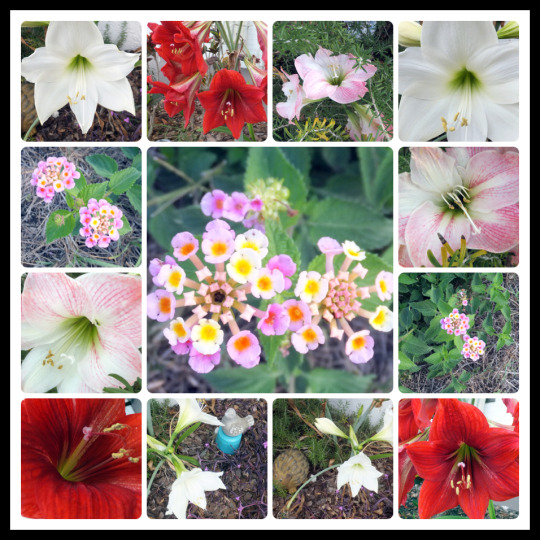
My End of April Flowers
#garden#nature#flowers#central Florida#Florida garden#centralflorida#central Florida garden#subtropical flowers#subtropical plants#amaryllis
7 notes
·
View notes
Text
The Arum family (Araceae) consists of terrestrial or aquatic shrubs, vines, or herbs. Amorphophallus is a large genus of about 200 tropical and subtropical tuberous herbs of the Arum family. Fifteen Amorphophallus species have been reported from Myanmar, five of which are known to be endemic.
A local plant enthusiast has recently found an unknown Amorphophallus species, flowering in May and June 2023 in Hpa-an District, Kayin State. He then sent the samples to a researcher in Myanmar. After meticulously examining its morphology and comparing it with protologues and relevant literature, as well as with digitized type specimens of Amorphophallus from across Myanmar and neighboring countries, researchers from the Xishuangbanna Tropical Botanical Garden of the Chinese Academy of Sciences and their collaborators confirmed that the collected specimens represent a new species.
Continue Reading.
62 notes
·
View notes
Text


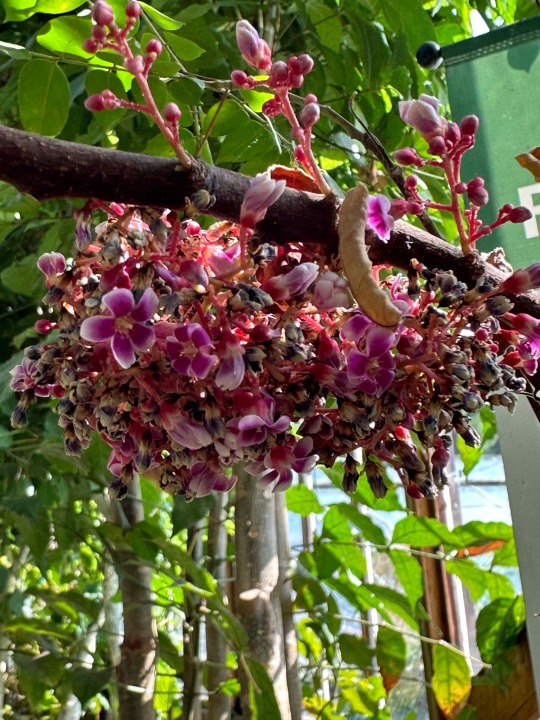
Plant of the Day
Friday 12 January 2024
In a tropical glasshouse a small tree Averrhoa bilimbi (bilimbi, cucumber tree, tree sorrel) was flowering. After the clusters of flowers finish the sour tasting, yellowish green fruit develop and are used for medicinal purposes in many tropical and subtropical countries.
Jill Raggett
#Averrhoa#bilimbi#cucumber tree#tree sorrel#plants#tropical#tropical glasshouse#horticulture#gardens#cambridge botanic garden#botanic#pink flowers#medicinal
69 notes
·
View notes
Text
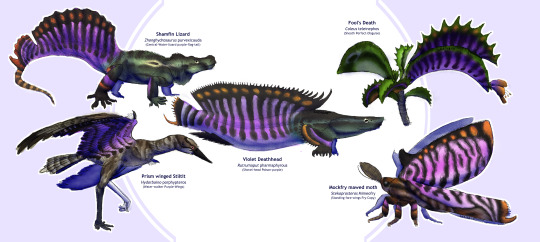
A Spectember art piece that took me most of the month to make. Showcasing a Batesian mimicry ring found in China some 7-10 million years in the future.
The northern snakeheads have diversified into several families of amphibious fish that are all highly successful in the Chinese subtropics. Overall, they now possess primitive feet derived from their pectoral fin.
One such species is the Violet Deathhead (Rutrumaput pharmaphyrous). A species of semi-aquatic and semi-fossorial snakehead that uses its shovel head to dig up a wide variety of prey. What makes the Violet Deathhead stand out is its iconic purple, black, and orange patterning used to warn predators of its potent venom-tipped rays.
The Violet Deathhead's infamy would spread throughout China's ecosystem. Its colors became an iconic warning of certain death. Something so iconic it spawned a variety of mimic species, all possessing the same patterns to ward off predators.
One of the first notable mimics isn't a snakehead or a fish altogether. But a sailfin lizard. Its ancestors rafted here from the Philippines during a particularly nasty southwest monsoon. They became so successful they spread across the entire continent.
This mimic species is known as the Shamfin Lizard (Zhonghydrosaurs purvexicauda). They are a species of arboreal herbivores with a slight tendency to feed on insects.
As their name implies, their tail takes on the same purple, black, and orange patterns used by the Violet Deathhead to present itself as such to trick predators. They even go as far as to develop fake eyespots on their back to match the model species' heads.
With as much speciation also comes the weight of extinction. And it is no different in this ecosystem as well. During this period, many species of Cranes and herons had to migrate away from China or go extinct altogether. However, this opens a new niche for an unexpected group of birds to flourish.
The second mimic species is the prism-winged Stiltit (Hydorbaino porphypteros). They are a species of wading piscivores that descend from the white-browed tit warbler.
They retained their ancestors' coloration but now for a new purpose. It's now within their underwing and patterned in the likeness of the Violet Deathhead's sail.
The third mimic species is the Mockfry Mawed Moth (Stekoprosteros mimeofry). They are species of flying pollinating moths that retain their proboscis into adulthood. They are surprisingly social and live in large flocks their whole lives. As their genus name suggests, their resting state has their forewings erected upward, unlike other moth species.
They possess similar colors and patterns to the Violet Deathhead but seem to mimic their species' young. The moths and fry are around the same size and live in large groups. Plus, Deathheads have their iconic coloring during their entire lives.
The final mimic species mentioned isn't a vertebrate or even an animal. Instead, the Fool's Death (Coleus teleinephos) is a species of Eudicot flowering plant. The stem of the Fool's Death grows into an arc, with the upper stalk resting in the giant leaves of the plant's base.
The Fool's Death's signature green and purple leaves allow it to mimic the patterns of the Violet Deathhead. And since their ranges overlap the most of all the mimics. The Fool's Death is surprisingly the most effective at being a mimic as it gets avoided most of any of the mimicking species.
#my art#artist on tumblr#speculative biology#worldbuilding#spectember#speculative zoology#speculative evolution#future evolution
96 notes
·
View notes
Text
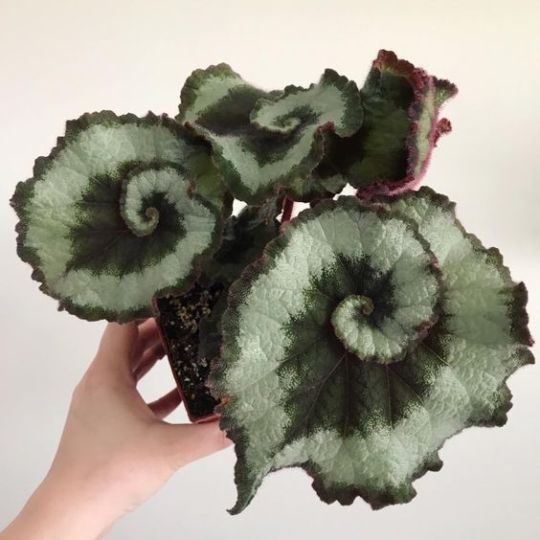

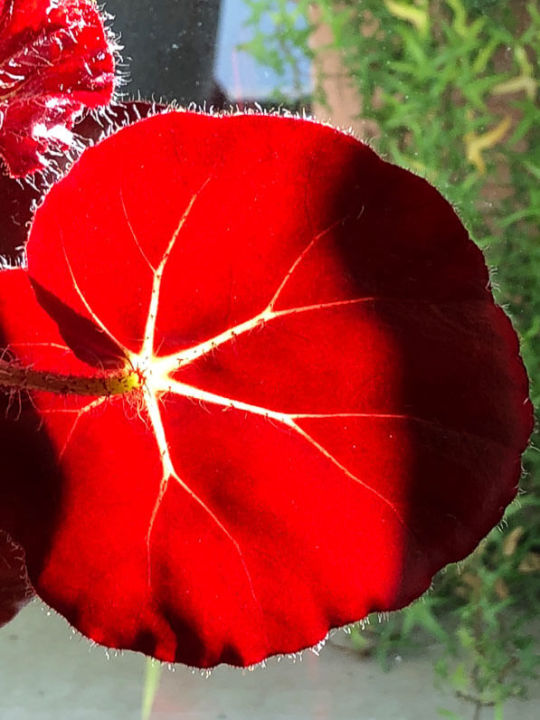
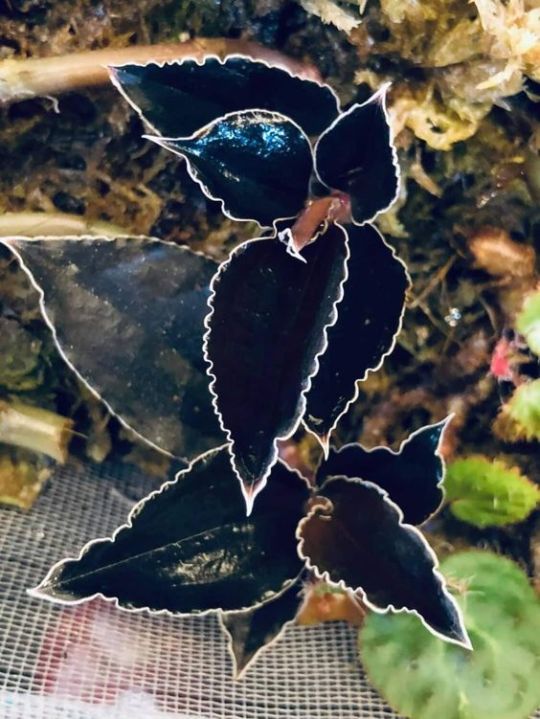
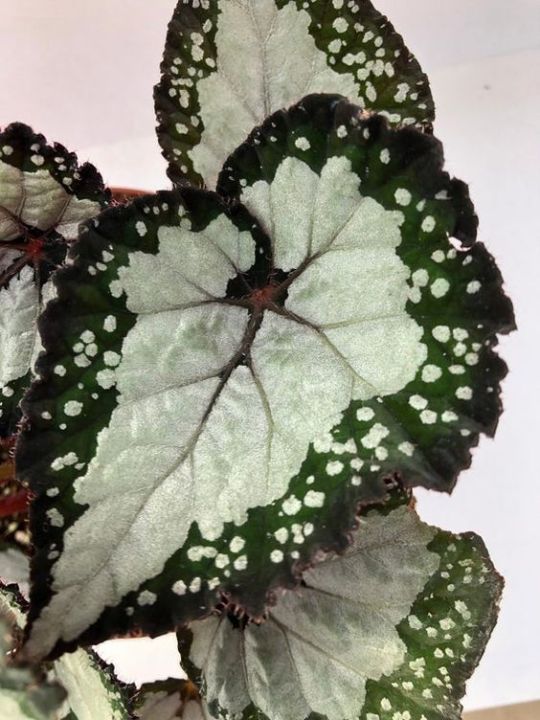
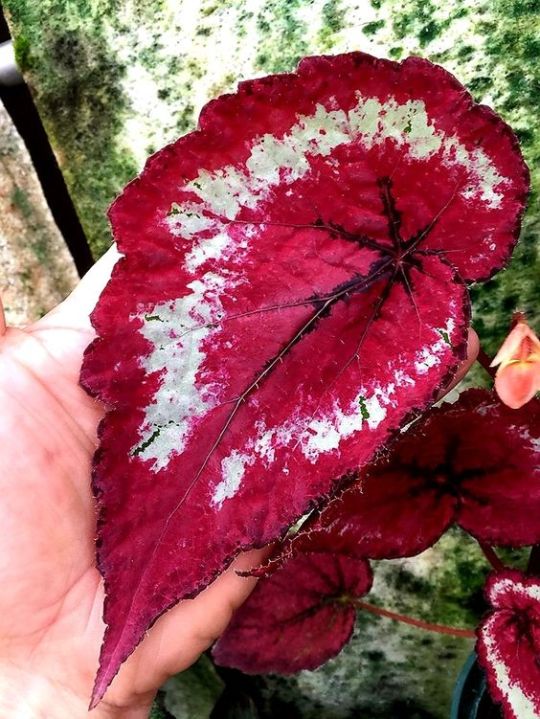

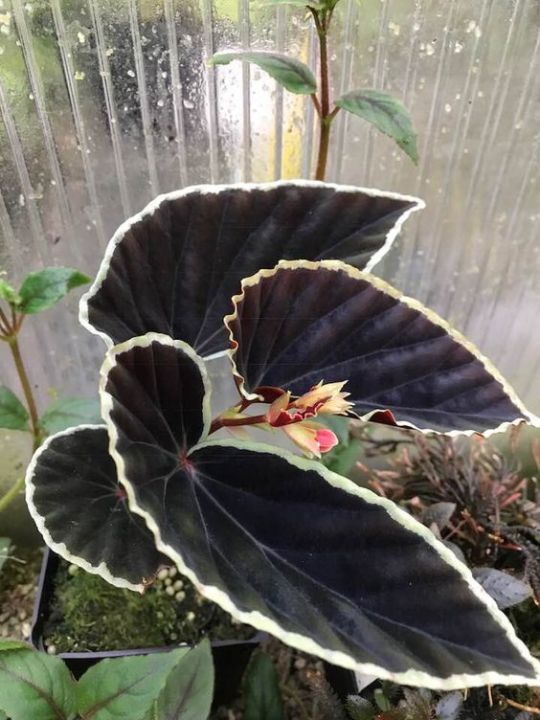


Begonia is a genus of perennial flowering plants in the family Begoniaceae. The genus contains more than 2,000 different plant species. The Begonias are native to moist subtropical and tropical climates, but many species are grown as house plants in cooler climate.
46 notes
·
View notes
Text
[A variation of] agua fresca [...] has its origins in the culture of the Mexica (Aztec) [...]. Nearly synonymous with the global tropics and subtropics, hibiscus has become a symbolic representation of the Caribbean’s transnational past, present, and future. Both the flower and the people who have long cared for it found their way to the Caribbean as a result of transatlantic flows that accompanied European imperial expansion. [...]
It’s widely assumed that hibiscus first made its way to the Caribbean from Africa, a continent that has long been home to a wide variety of hibiscus flowers. Among them are Kenaf (Hibiscus cannabinus L.) and Roselle/hibiscus/bissap (Hibiscus sabdariffa L.) in the African Savanna Complex and Okra/gumbo (Hibiscus esculentus L.) in the West African Savanna-Forest Complex. [...] The narratives of hibiscus migration are often associated with the violent histories of the Atlantic slave trade. [...] As noted by Judith Carney and Richard N. Rosomoff in [...] In the Shadow of Slavery: Africa’s Botanical Legacy in the Atlantic World, enslaved peoples mobilized food as a way to survive and thrive despite the violence inflicted against them, particularly by cultivating kitchen gardens. [...] These plots had different names in different parts of the Caribbean, such as conucos in the Hispanic Caribbean, kunukus in the Dutch Caribbean, and “ground provisions” in the West Indies. [...] [T]hey made a home [...], with Hibiscus becoming a staple garden plant, mainly consumed as a herbal beverage, called by different names in various parts of Africa (bissap, wonjo, foléré, dabileni, tsobo, zobo, or sobolo). In the Americas, the drink is referred to as sorrel or agua de Jamaica. [...]
Hibiscus also has deep roots in Asia, which is the homeplace of various species of the genus. The introduction of Asian species to the Caribbean via indentured servants added another layer to the narratives of forced labor and migration in the region.
Imperial powers supplemented enslaved labor in the plantation system with indentured labor -- a system of bonded exploitation that followed the abolition of the Atlantic slave trade. Between 1837 and 1920, more than 2.2 million Chinese, Indians, Javanese, Malagasy, and free Africans were indentured on tropical plantations [...].
Hibiscus tiliaceus, for example, is one species that arrived with indentured Indians. As elaborated by Tobagonian scholar Brinsley Samaroo, this plant had various purposes; it was used for [...] worship, in toothbrushing, as fodder for animals, and for creating hedges and flower gardens. [...]
These practices show interesting parallels in how the diasporic communities of African and Indian descent in the Caribbean have mobilized the plant [...].
---
Text by: Andrés Triana Solórzano. “Plant of the Month: Hibiscus.” JSTOR Daily. 28 April 2023. [Some paragraph breaks/contractions added by me.]
98 notes
·
View notes